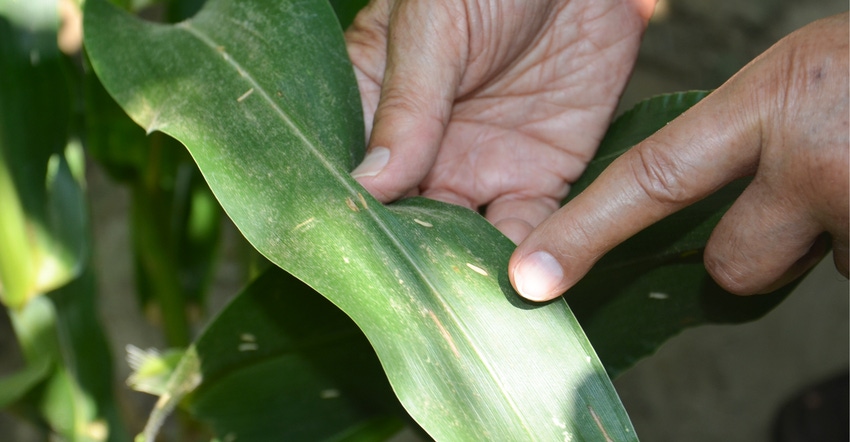
Two years ago, corn planted June 9 in a field trial still yielded nearly 220 bushels per acre. Planting later than normal doesn’t automatically doom corn to lower yields, says Dave Nanda, director of Genetics for Seed Genetics-Direct. The Corn Watch ’19 field was planted much later than the operators intended, but it still has reasonably good yield potential.
The corn plants themselves will do part of the work in catching up by moving toward maturity at a faster rate than if the same seed had been planted earlier. The farmer also needs to play a role in helping late-planted corn reach optimum yield potential, Nanda says. Scouting for diseases and insects becomes crucial.
Nanda is observing the Corn Watch ’19 field throughout the season. Seed Genetics-Direct sponsors Corn Watch ’19.
Maturity response
Several years ago, Bob Nielsen, Purdue University Extension corn specialist, and Peter Thomison, his counterpart at Ohio State University, documented that when corn is planted after about May 1, hybrids begin to shorten the total amount of growing degree days needed to reach maturity. This could be a big help in beating fall frosts for corn planted late this year, Nanda says.
The researchers determined that the number of GDDs that must accumulate from planting to silking decreases by about 1.6 GDDs per day when corn is planted after May 1. GDDs are how scientists measure heat accumulation during the growing season. In general, the higher the temperatures, the more GDDs which accumulate.
The real impact on maturity happens after silking. When comparing a hybrid planted on or before May 1 to the same hybrid planted later, the total number of GDDs needed to get from planting to black layer decreases by about 6.8 GDDs per day of delayed planting.
Here’s an example: If a hybrid requires 2,800 GDDs from planting to black layer when planted May 1, it will require just under 2,600 GDDS if planted May 31. The example comes from Purdue’s Corn and Soybean Field Guide.
Scouting component
Corn plants will do their part to compensate for late planting. Here’s where your role comes in.
“Protect plants from corn borers and rootworm beetles in conventional, non-GMO corn,” Nanda says. Second-generation European corn borer can be tough to treat since larvae burrow into stalks. Still, be on guard if you saw shot-hole feeding on a relatively high percentage of plants when corn was smaller. Shot-hole feeding is caused by first-generation corn borer larvae. If you planted GMO corn borer-resistant hybrids, you should find minimal signs of corn borer feeding.
Both rootworm and Japanese beetles can cause problems by clipping silks. The general recommendation is that if silks are clipped to less than one-half inch and pollination is under 50% complete, you may need to treat beetles, agronomists note.
“If scouting turns up signs of northern corn leaf blight, gray leaf spot or tar spot, a relatively new disease, be ready to apply fungicides,” Nanda says.
Pollination could occur in mid- to late July or early August, when odds favor hotter weather. Plants don’t need the extra stress of disease pressure, Nanda concludes.
About the Author(s)
You May Also Like




